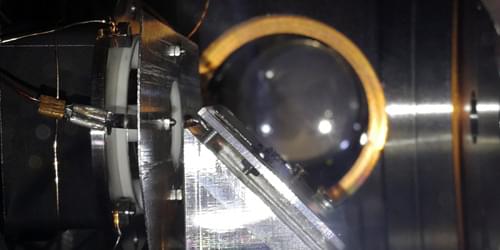The goal of the AEgIS Collaboration at CERN in Switzerland is to measure the effect of Earth’s gravitational field on antimatter—specifically, antihydrogen atoms. Antihydrogen is produced using positronium—which consists of an electron and a positron bound together—and the colder the positronium, the faster the antihydrogen production rate. Accordingly, AEgIS researchers have spent the past four years trying to develop a way to cool positronium. Now, with their first demonstration of positronium laser cooling, they have succeeded [1].
Laser-cooling positronium is a much tougher undertaking than laser-cooling regular atoms. Positronium can only survive for 140 nanoseconds before annihilating, even in ultrahigh vacuum. Moreover, the relevant transition frequency for positronium cooling is in the deep ultraviolet, where laser technology remains relatively undeveloped.
The AEgIS Collaboration designed a custom laser system that uses the mineral alexandrite as the lasing medium. Alexandrite-based lasers emit at deep-ultraviolet wavelengths, but devices that meet the intensity and pulse-length requirements for positronium cooling are not commercially available. The researchers also had to overcome another major hurdle: to avoid the loss of positronium atoms during the cooling process, any external electric and magnetic fields had to be eliminated. As a result, the electrostatic equipment used for manipulating the positronium had to be capable of being switched off in a matter of nanoseconds.
